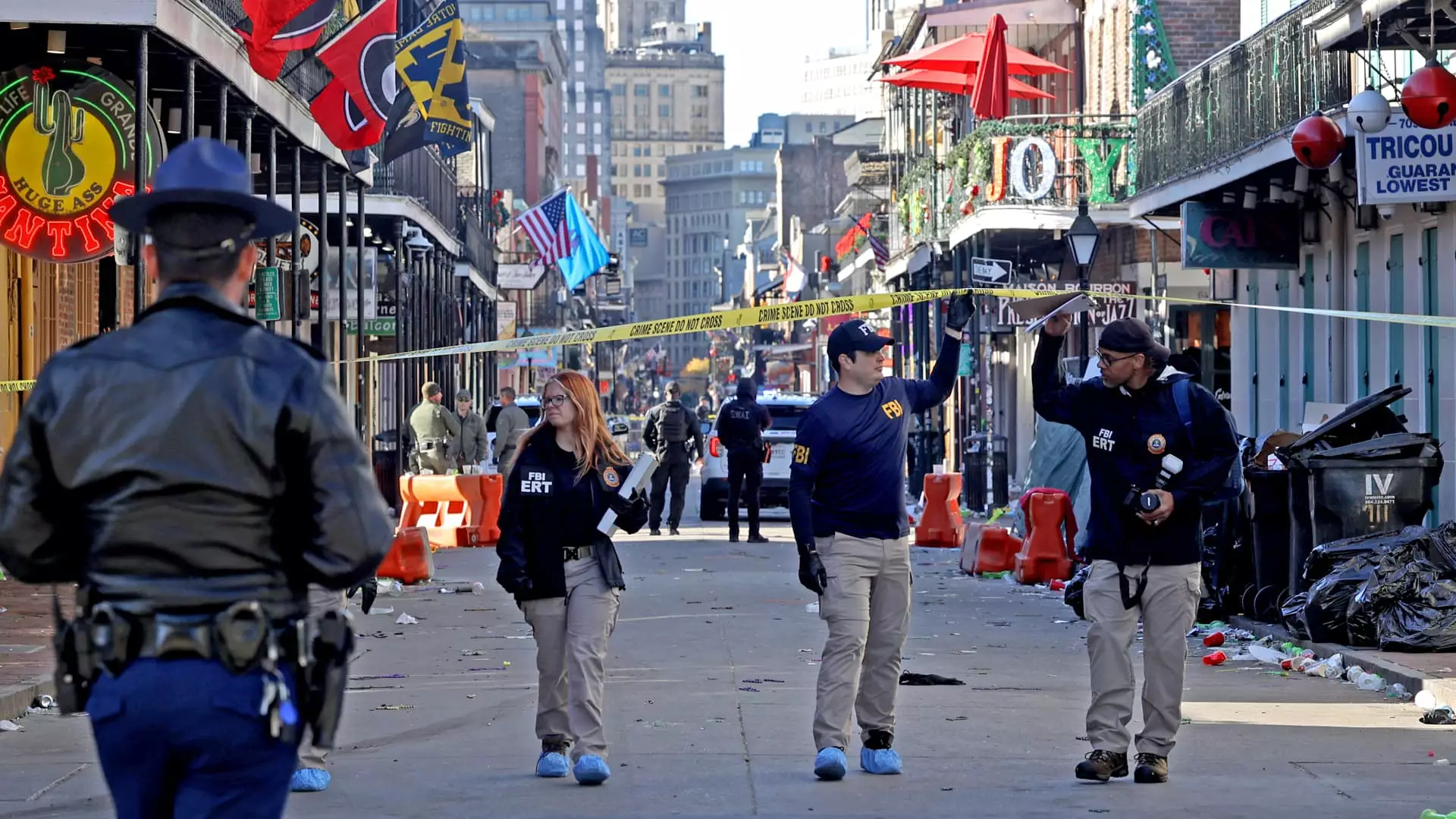In the early hours of New Year’s Day, the festive atmosphere in New Orleans was shattered by tragedy when a man drove a pick-up truck into the bustling revelry of Bourbon Street, resulting in the deaths of 15 individuals and injuring over 30 others. This horrifying incident, described by law enforcement officials as a deliberate attempt to cause mass harm, left the community grappling with grief and disbelief. Simultaneously, a separate yet ominous explosion occurred outside Trump International Hotel in Las Vegas, where a Tesla Cybertruck exploded, leading to concerns regarding potential links between these two violent acts.
As investigations unfolded, officials began to scrutinize possible military connections between the suspect in New Orleans, identified as Shamsud-Din Jabbar, and the unidentified individual linked to the Las Vegas explosion. Jabbar, an army veteran who served from 2006 to 2020, had a history that included deployment to Afghanistan. This common thread of military experience raised alarms for many within law enforcement and national security communities, leading them to probe deeper into both incidents.
As the FBI dove into the investigations, it was revealed that both vehicles involved in these attacks were rented through the same company, Turo. This detail not only pointed to logistical ties between the two suspects but also suggested a possible premeditated connection, raising questions about how two individuals with military backgrounds could orchestrate such heinous acts. Turo’s position in the situation became critical as they pledged cooperation with law enforcement—but unanswered questions lingered regarding the thoroughness of their vetting processes.
The investigation gathered further attention as President Joe Biden stated that both law enforcement and the intelligence community were working to determine if any connections existed between the attacks. As the inquiries progressed, officials in both cities faced intense scrutiny, prompting them to enhance security measures in the surrounding areas. Las Vegas officials were particularly vigilant due to the proximity of the Casino and the high-profile nature of the Trump hotel.
In New Orleans, the atmosphere shifted dramatically from one of celebration to mourning. The incident on Bourbon Street, an area known for its vibrant nightlife, left bloodied and mangled bodies as a stark reminder of the potential vulnerability existing within crowded public spaces. Witness reports and social media footage showcased the aftermath, bringing home the reality of loss and chaos. Mayor LaToya Cantrell lamented the lack of sufficient barriers that were still under construction, prompting public discourse on urban safety measures.
Community response has included individuals honoring the victims with flowers and prayers on the street where the tragedy unfolded. The impact of the event rippled throughout the United States as citizens expressed horror at the thought of such violence occurring during a time meant for celebration.
Meanwhile, the Sugar Bowl college football game, featuring iconic rivals Georgia and Notre Dame, was set to proceed as planned, albeit amid heightened security concerns. Local law enforcement agencies had to find a balance between maintaining public safety and allowing the continuation of major events, a challenge compounded by the unsettling nature of the recent incidents.
Questions of Security and Policy
This cascade of events reignited discussions on security policies, particularly in open public spaces during high-traffic celebratory periods. Questions emerged regarding how individuals with military backgrounds could so easily transition from service to committing acts of violence against civilians. Law enforcement officials stressed the need for increased vigilance, better screening methods for rental vehicles, and the necessity of rigorous surveillance in areas frequented by large crowds.
In the wake of tragedy, community leaders and policymakers must wrestle with the implications of these incidents. As efforts to investigate potential connections continue, contrasting portraits of festivity and chaos serve as reminders of the fragility of a society enjoying freedom and celebration during the holiday season.
The troubling convergence of the New Orleans car ramming and the Las Vegas explosion raises alarm bells about the potential for such tragedies to occur again. As shared elements of military experience and rented vehicles emerge, the challenge for authorities is multi-fold: not only must they unravel the specifics of these cases, but they must also transform community security and policing policies to protect against future threats. In the end, an unyielding commitment to understanding the motivations behind these events is essential to preventing further loss of life, ensuring that public celebrations can safely continue.


Leave a Reply